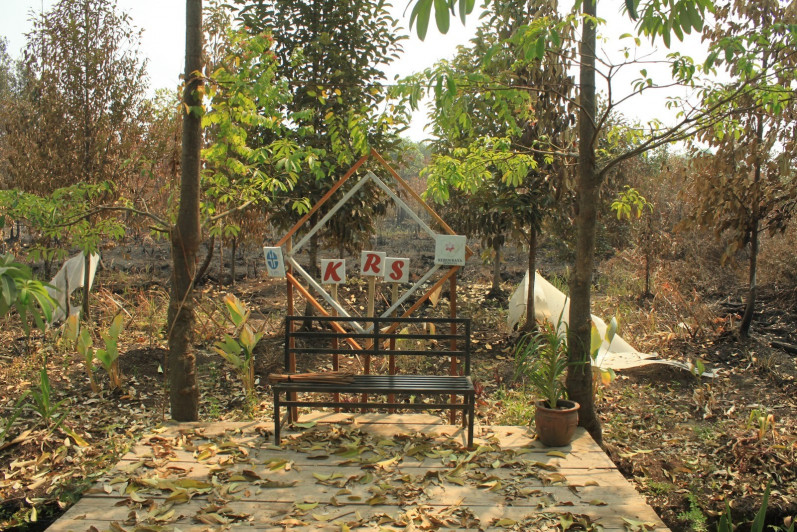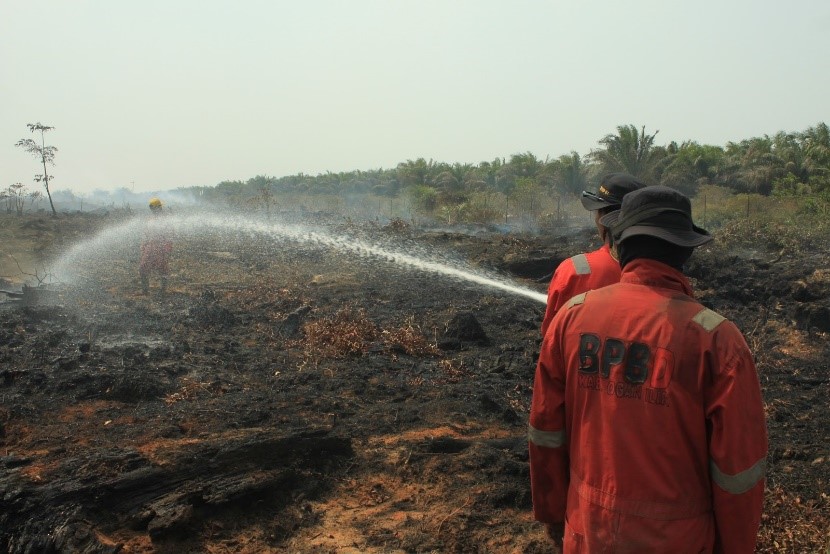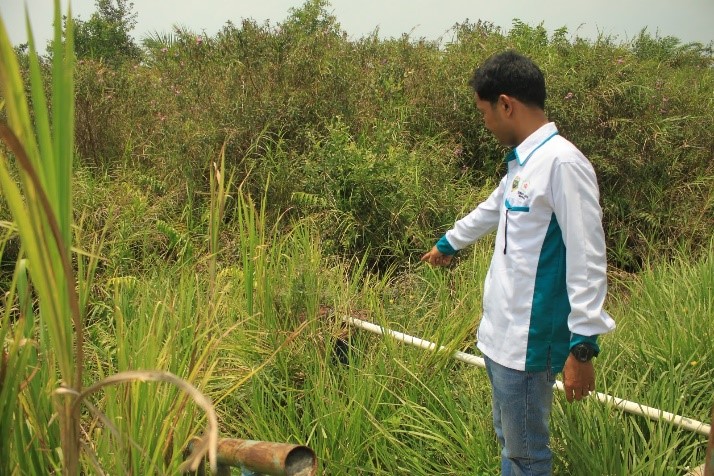Decoding Nature Amidst the Haunting Specter of Development
By AdminLack of Trained Personnel at Sriwijaya Botanical Park

Sriwijaya Botanical Park experienced severe fires during the dry season in 2019. The reason was that the park, which was initiated by the central government and the provincial government of South Sumatra, lacked trained personnel in preventing and handling land fires. Moreover, the fire extinguishing equipment is also not sufficient so that when the fire started, the personnel could not do much.
The fire had entered the park in mid-morning. During the field observation, there were several points of burned land to the east and north of the botanical park. Those lands were productive oil palm and rubber plantations. Currently, police lines installed by the Ogan Ilir District Police are still seen on the highway from Botanical Park to Kayuara Batu Village crossroad. However, Zulkarnaen, head of the Technical Implementation Unit of the Sriwijaya Botanical Park, did not dare to guess where the fire came from.
The manager of Sriwijaya Botanical Park admitted that they did not expect the fire to scorch up to 26.72 hectares of land because two days earlier on Sunday, 8 September 2019, hotspots were not found around the park. Forest and land fires only took place around Parit Village, Suak Batok, which is dozens to tens of kilometers away from the park.
Zulkarnaen said that the park has 24 personnel consisting of 7 state civil apparatus and 17 contract workers whose duties are to fight and prevent land and forest fires. But Zulkarnaen admitted that since the formation of the Firefighting Community (MPA), these contract workers have not been trained like professional firefighters. “The MPA formed by the botanical park needs to be trained. We have repeatedly proposed to get this training but it has not been realized,” he said.
Zulkarnaen explained that MPA was formed after the fire in 2016. They should have had personnel trained to deal with fire threats from within the park and from the surrounding concession lands. He was sure that they can extinguish the fire quickly if they are trained and have adequate equipment. He also said that when the park caught on fire on Sunday, 8 September, the water-bombing helicopter arrived late at the scene and the fire trucks arrived a few hours after the fire spread. “Initially we extinguished the fire manually by using wood sticks and robin pump. Due to lack of training, the pump hose was caught on fire,” he said.
Actually, the park already has 16 drilled wells but only 2 units are functioning, causing delays in handling in the event of a fire.
The author checked the two functioning wells and one that is not functioning. The two wells are located right behind the park’s office and in the nursery garden.
Nopriadi S. Hut, Section Head of Off-Site Conservation of the Sriwijaya Botanical Park, elaborated that the burned land consisted of 2 hectares of shrubs and 24.72 hectares of land with various types of trees. 833 trees were planted on every hectare of the burned land. If the area of the burned land is multiplied by the number of trees, that means around 20,591 trees were burned. The burned vegetation consists of 1-4 year-old plants, including weeping paperbark, jelutong, common pulai, marsh pulai, tembusu, red balau, medang labu, and beriang. "We hope that the conservation program will continue even though tens of hectares of land was burned," he said.
With this incident, he admitted that the park must strengthen the MPA personnel’s ability. Currently, MPA only consists of less than 20 personnel who can’t operate the equipment and are not proficient at reading the wind directions. He also hopes that the drilled wells can operate normally so that they can water and wet the lands prone to fire. Moreover, they must also normalize the primary, secondary, and tertiary canals completely.
"We need to have floating pumps, normalize the canals, train the MPA personnel, and strengthen the early prevention system," he said.







